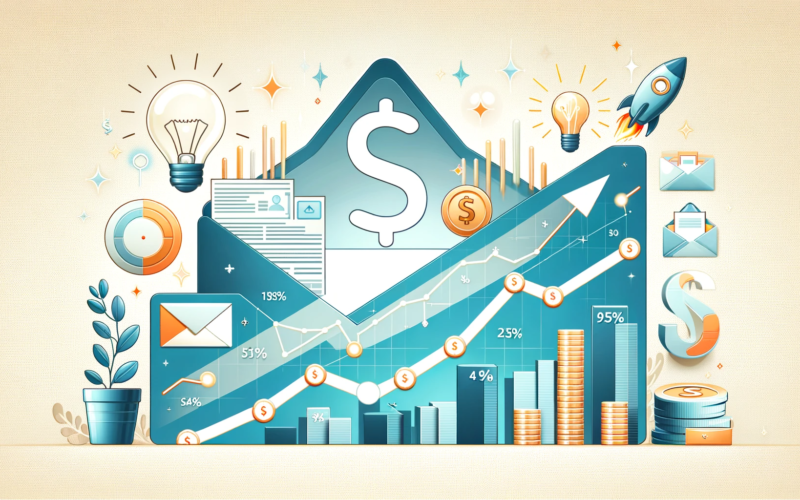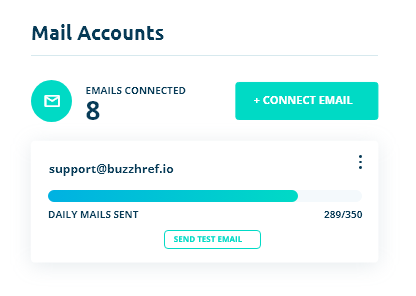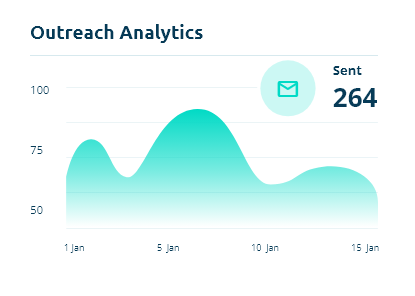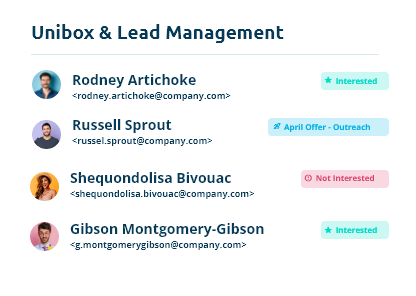Introduction
In today’s marketing landscape, effective email campaigns are key to engaging and converting audiences. With its ability to personalize and directly connect, email marketing stands as a critical strategy for businesses. Crafting emails that resonate and stand out requires overcoming challenges like audience segmentation and design. Buzzhref streamlines this process, offering a suite of tools for segmentation, A/B testing, and analytics, simplifying email marketing for better engagement and conversion.
With Buzzhref, marketers can navigate email campaign creation more effectively, focusing on delivering impactful messages. This guide presents a concise checklist for successful email marketing, covering everything from goal setting to analyzing campaign outcomes, ensuring marketers have a clear roadmap to enhance their strategies and achieve objectives.
- Setting Clear Campaign Goals
Defining what you aim to achieve with your campaign. - Understanding Your Audience
Segmenting and knowing the preferences of your audience. - Crafting the Content
Writing compelling email content that speaks to your audience. - Testing Before Sending
Conducting A/B tests to refine your message and delivery. - Scheduling and Sending
Planning the optimal time to send your emails. - Analyzing the Results
Measuring success and understanding campaign performance. - Learning and Adjusting
Using insights to improve future email campaigns.
This streamlined approach, supported by Buzzhref, empowers marketers to create email campaigns that not only reach their audience but also make a significant impact.
1. Setting Clear Campaign Goals
Initiating an impactful email campaign starts with defining clear, measurable goals, which serve as the backbone of your marketing strategy.
This crucial first step determines the direction and focus of the campaign, guiding decisions on targeting, content, and design. Effective goals adhere to the SMART criteria: Specific, Measurable, Achievable, Relevant, and Time-bound, such as aiming to boost online sales by 15% over the next quarter.
This stage involves identifying what you want to achieve with your campaign and setting benchmarks for success. By establishing specific objectives upfront, you can tailor your approach to directly address your marketing needs, ensuring that every element of your campaign is aligned with your goals.
The process of setting goals also involves leveraging insights from past campaigns to inform future strategies, making adjustments based on what has been proven to work. This approach ensures that your email marketing efforts are both strategic and data-driven, significantly increasing the likelihood of achieving your desired outcomes.
2. Understanding Your Audience
A successful email campaign hinges on a deep understanding of your audience. Knowing who you’re communicating with allows you to tailor your messages for maximum relevance and engagement. This step involves segmenting your audience based on various criteria such as demographics, behavior, and past interactions with your brand.
Segmentation is crucial for personalizing your emails to meet the specific needs and interests of different audience segments. For example, new subscribers might receive a welcome series, while long-time customers might get exclusive offers. This targeted approach ensures that your emails resonate with recipients, increasing open rates, click-through rates, and conversions.
Moreover, understanding your audience goes beyond segmentation. It’s about gaining insights into their preferences, pain points, and how they interact with your emails. Do they prefer detailed guides or quick tips? Are they more responsive to offers in the morning or evening? Answering these questions allows you to craft content that speaks directly to your audience, making your email campaigns more effective.
Regularly gathering and analyzing feedback through surveys or tracking how subscribers interact with your emails can also provide valuable insights. This continuous learning process helps refine your audience understanding over time, enabling you to create even more targeted and engaging email campaigns.
3. Crafting the Content
Once you have a solid understanding of your audience, the next step is to craft content that speaks directly to their needs, interests, and preferences. The content of your email is where you connect with your audience, providing value that engages and motivates them to take action. Whether you’re educating, informing, or entertaining, your email content should be concise, compelling, and relevant to the reader.
Creating effective email content involves a few key considerations:
- Personalization: Go beyond using the recipient’s name. Tailor your message based on the segment’s characteristics and past interactions with your brand.
- Clarity and Conciseness: Keep your message clear and to the point. Your goal is to convey your message effectively without overwhelming the reader.
- Strong Call-to-Action (CTA): Every email should have a purpose, and your CTA is what guides the recipient to the next step. Whether it’s to read a blog post, make a purchase, or sign up for a webinar, your CTA should be clear and compelling.
- Visual Elements: Use images, videos, and formatting to break up text and make your email visually appealing. However, ensure these elements support your message rather than distract from it.
For more detailed insights into crafting compelling email content, including strategies for personalization, creating impactful CTAs, and ensuring your messages stand out, refer to the comprehensive guide on effective cold email outreach at The Ultimate Guide to Effective Cold Email Outreach.
This resource provides valuable tips and best practices that can elevate your email content, making your campaigns more engaging and successful.
4. Testing Before Sending
Before finalizing your email campaign, it’s crucial to conduct tests to ensure everything is optimized for the best possible performance. Testing various elements of your email, from subject lines to call-to-action buttons, helps identify what resonates most with your audience. A/B testing, or split testing, is a particularly effective method, allowing you to compare different versions of your email to see which performs better.
Buzzhref offers comprehensive A/B testing tools that make it easy to set up and run tests on your email campaigns. With Buzzhref, you can test multiple aspects of your emails, including subject lines, email content, images, and even send times. This data-driven approach ensures that decisions are not based on assumptions but on actual subscriber behavior and preferences, leading to higher engagement rates and better overall campaign performance.
5. Scheduling and Sending
Timing can significantly impact the success of your email campaign. The best send time varies depending on your audience’s habits and preferences. With Buzzhref, scheduling your emails to be sent out at the optimal time is straightforward. The platform’s scheduling feature allows you to plan your email delivery down to the minute, ensuring your messages reach your audience when they are most likely to engage.
Additionally, Buzzhref’s automation capabilities enable you to set up trigger-based emails for specific actions, such as welcoming new subscribers or re-engaging those who haven’t interacted with your emails recently. This ensures that your campaign runs smoothly, with each email sent out at the most effective time, without the need for constant manual oversight.
By leveraging Buzzhref for testing and scheduling, you can significantly enhance the effectiveness of your email campaigns, ensuring that your messages not only reach your audience but also resonate with them, driving higher open rates, engagement, and conversions.
6. Analyzing the Results
Post-campaign analysis is critical for understanding the effectiveness of your email marketing efforts. Analyzing key metrics reveals what worked and what needs improvement in your campaign.
This step is about leveraging data to measure success against your initial goals and identifying opportunities for optimization. Short, focused analysis helps in making informed decisions to enhance the impact of future campaigns, ensuring a strategy that evolves with your audience’s needs and preferences.
7. Learning and Adjusting
The process of refining your email marketing strategy is an ongoing cycle of learning from each campaign’s outcomes and making necessary adjustments. This iterative approach involves analyzing performance data, identifying trends and patterns, and applying these insights to enhance future campaigns. Adjustments may range from modifying email content and design to better align with audience preferences, to tweaking send times for improved open rates. The key is to remain agile, responsive to data, and open to evolving your strategy based on what the metrics reveal.
Moreover, direct feedback from your audience serves as a valuable resource for continuous improvement. Engaging with your subscribers through surveys or feedback forms provides qualitative insights that quantitative data alone cannot offer. This comprehensive insight into campaign performance helps refine your strategy, ensuring emails effectively engage your audience and achieve your goals.
Conclusion
In the digital marketing ecosystem, email campaigns are crucial for engaging and converting audiences. This guide highlighted the journey from conceptualizing to executing email campaigns, emphasizing strategic planning, personalization, and the utility of platforms like Buzzhref for enhancing these processes. Embracing continuous learning and leveraging insights for adjustments are key to refining and achieving marketing success.
As we look ahead, the role of email marketing in nurturing customer relationships is poised to grow. Utilizing tools such as Buzzhref can unlock the potential for more personalized and impactful campaigns, ensuring not just wider reach but also meaningful engagement and conversions. This streamlined approach paves the way for marketers to better connect with their audiences and drive results in an increasingly competitive digital landscape.
Ready to elevate your email marketing strategy? Explore Buzzhref today and start creating more impactful and engaging email campaigns.








